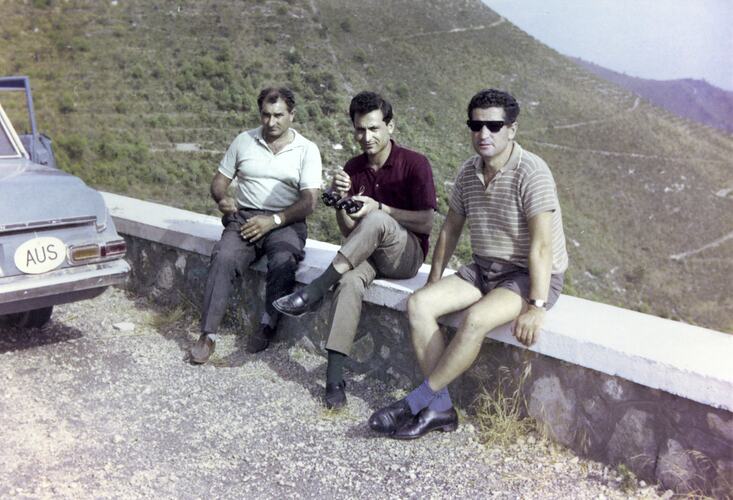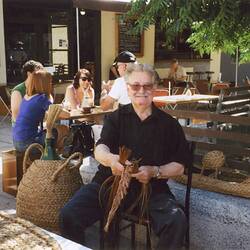Summary
Colour photograph of Giovanni D'Aprano (at centre) with family members on a driving trip in Sperlonga, Italy, 1965. This photograph was taken during Giovanni's return visit to Italy after migrating to Australia in 1948. Giovanni transported this car from Australia for the trip.
Giovanni (Gianni/John) Batista D'Aprano was born in Ventosa, a village in Lazio province, Italy in 1925. He was one of a number of family members who migrated to Australia over three decades. The entire family had planned to leave Italy earlier but were prevented by the outbreak of World War II. The War was an extremely difficult period for Giovanni and his family, who eventually wove bags and baskets to stay alive.
Soon after arriving in Melbourne, Giovanni worked as a barber, a real estate agent and he went on to complete a law degree. He and Maria had three children and the couple built their first and final home in Pascoe Vale South. Giovanni and Maria continued many of their traditional Italian domestic traditions, including Giovanni's basket weaving practice which he had learnt as a child in Ventosa.The baskets, containers and sculptural pieces are all for primarily decorative purposes, although traditionally in Ventosa such items as baskets and bags had a very practical use.
Description of Content
Three young men sitting on a roadside with mountain views in the background and a car boot partially visible.
Physical Description
Digital image
Significance
This rich collection of hand-woven baskets, tools and photographs tells stories of migration, settlement in Melbourne's northern suburbs, and traditional cultural practices through the baskets. This collection is particularly evocative because photographs document Giovanni 'D'Aprano at work making and sourcing materials for the baskets, as well as images relating to his life before migrating. It also enables the representation of male traditional cultural practices in the collection which is currently more dominated by examples of women's creative cultural activities and it compliments the Mazzarino basket weaving collection which collectively demonstrate regional stylistic differences.
More Information
-
Collecting Areas
Migration & Cultural Diversity, Images & Image Making, Home & Community
-
Acquisition Information
Donation from Giovanni D'Aprano, 21 Aug 2013
-
Person Depicted
-
Format
Digital file, Colour
-
Classification
-
Category
-
Discipline
-
Type of item
-
Keywords
Italian Immigration, Migration & Settlement, Portraits, Weaving, Handcrafts, Tools

